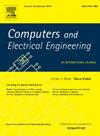A hybrid BERT-CPSO model for multi-class depression detection using pure hindi and hinglish multimodal data on social media
IF 4
3区 计算机科学
Q1 COMPUTER SCIENCE, HARDWARE & ARCHITECTURE
引用次数: 0
Abstract
Due to the psychological strain that depression causes, there has been a noticeable increase in the number of persons compromising their lives in recent years. Social media platforms provide researchers with an entirely novel viewpoint on identifying individuals who are depressed. Previous research on automatic learning models for depression detection revealed low detection accuracy and an absence of optimizing techniques that could enhance detection accuracy. Furthermore, there is no such dataset, and very little study has been done on the multimodal pure Hindi and code-mixed Hinglish language domains. In light of this, we developed a Hindi dataset and suggested reliable methods for depression detection based on multimodal data, i.e., text and images, using the Hindi and Hinglish languages. This study aims to accomplish three things: first, it will evaluate text data using an effective Bidirectional Encoder Representations from Transformers (BERT) approach and compare it with other transfer learning variants; second, it will analyze image data by suggesting a Convolutional Neural Network (CNN) optimized with a nature-inspired algorithm, namely Particle Swarm Optimization (PSO), or CPSO; and third, it will classify the multimodal data into depressive and non-depressive posts by suggesting a hybrid of the best-performing models on text and images, namely BERT-CPSO (BTCPSO). The results produced with the BERT model showed the best accuracy of 95% for text data, in contrast to RoBERTa, DistilBERT, and XLNet. Further, CPSO outperforms other Machine Learning (ML) and Deep Learning (DL) algorithms for image data with an accuracy of 95%. Additionally, comparing the proposed CPSO with a basic CNN revealed that integrating the PSO technique with CNN increased the model's accuracy in detecting depressed posts by 5%. In conclusion, hybrid BERT-CPSO outperforms other BERT combinations with ML and DL algorithms for multimodal data, achieving 97%, 95%, 98%, and 96%, respectively, in accuracy, recall, precision, and F1-scores. As a result, the findings of comparing the suggested technique with the earlier models show the effectiveness of the approach that has been provided and can help medical professionals diagnose depression with precision.
利用社交媒体上的纯印地语和英语多模态数据进行多类抑郁检测的 BERT-CPSO 混合模型
由于抑郁症造成的心理压力,近年来影响生活的人数明显增加。社交媒体平台为研究人员识别抑郁症患者提供了一个全新的视角。以往对抑郁检测自动学习模型的研究表明,检测准确率较低,而且缺乏可提高检测准确率的优化技术。此外,目前还没有这样的数据集,对多模态纯印地语和代码混合印地语语言域的研究也很少。有鉴于此,我们开发了一个印地语数据集,并提出了基于多模态数据(即文本和图像)、使用印地语和兴英语进行抑郁检测的可靠方法。本研究旨在实现三个目标:首先,它将使用有效的变压器双向编码器表征(BERT)方法评估文本数据,并将其与其他迁移学习变体进行比较;其次,它将通过建议使用自然启发算法(即粒子群优化(PSO)或 CPSO)优化的卷积神经网络(CNN)分析图像数据;第三,它将把多模态数据分为抑郁帖子和非抑郁帖子,建议使用文本和图像最佳模型的混合模型,即 BERT-CPSO (BTCPSO)。与 RoBERTa、DistilBERT 和 XLNet 相比,BERT 模型对文本数据的准确率最高,达到 95%。此外,在图像数据方面,CPSO 的准确率高达 95%,优于其他机器学习(ML)和深度学习(DL)算法。此外,将所提出的 CPSO 与基本 CNN 进行比较后发现,将 PSO 技术与 CNN 整合后,该模型在检测抑郁帖子方面的准确率提高了 5%。总之,在多模态数据方面,混合 BERT-CPSO 的准确率、召回率、精确率和 F1 分数分别达到了 97%、95%、98% 和 96%,优于其他 BERT 与 ML 和 DL 算法的组合。因此,将所建议的技术与早期模型进行比较的结果表明,所提供的方法非常有效,可以帮助医疗专业人员精确诊断抑郁症。
本文章由计算机程序翻译,如有差异,请以英文原文为准。
求助全文
约1分钟内获得全文
求助全文
来源期刊

Computers & Electrical Engineering
工程技术-工程:电子与电气
CiteScore
9.20
自引率
7.00%
发文量
661
审稿时长
47 days
期刊介绍:
The impact of computers has nowhere been more revolutionary than in electrical engineering. The design, analysis, and operation of electrical and electronic systems are now dominated by computers, a transformation that has been motivated by the natural ease of interface between computers and electrical systems, and the promise of spectacular improvements in speed and efficiency.
Published since 1973, Computers & Electrical Engineering provides rapid publication of topical research into the integration of computer technology and computational techniques with electrical and electronic systems. The journal publishes papers featuring novel implementations of computers and computational techniques in areas like signal and image processing, high-performance computing, parallel processing, and communications. Special attention will be paid to papers describing innovative architectures, algorithms, and software tools.
 求助内容:
求助内容: 应助结果提醒方式:
应助结果提醒方式:


